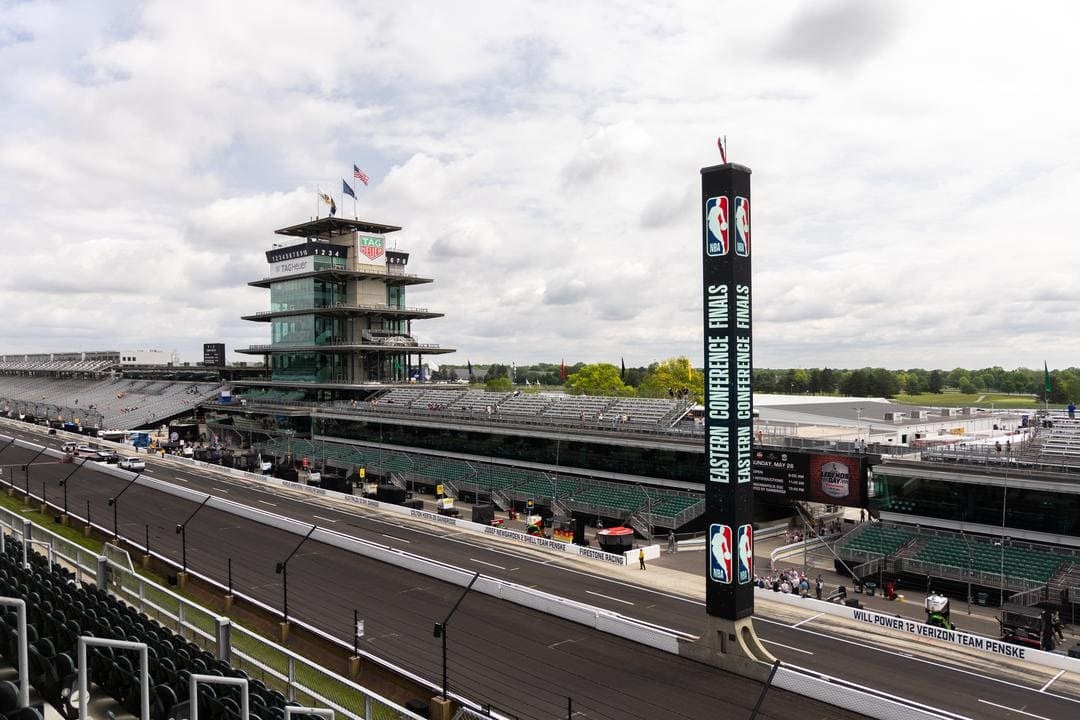The day that NTT IndyCar Series fans have waited for the last three decades has finally arrived.
Once the great motorsports powerhouse in the country, IndyCar might be rising out of the ashes of the Split and Civil War that plagued it through the first decade of this century. Finally, the road ahead is paved with fresh, cut Culver bricks and PPG Paint.
With the news that Fox has purchased a third of Penske Entertainment, which includes the NTT IndyCar Series and the Indianapolis Motor Speedway, a lot of positive possibilities exist for the future. A media entity buying into the most iconic race track in the world and owning a stake in the Indianapolis 500 is a massive game-changer for the direction of the premier American open-wheel series.
The Wall Street Journal reported the purchase of FOX’s slice at approximately $125 million, which will leave the IndyCar team owners and stakeholders rejoicing at the possibilities that investment brings. There is a lot of optimism surrounding what this does for Roger Penske’s series, from a monetary standpoint to partnership opportunities. This will absolutely increase the tools available to grow IndyCar’s brand, beyond anything Penske can provide or the Hulman-George family before him.
What will be interesting to see first is how much financial investment is pumped into the open-wheel world. When Penske bought the series and IMS from Tony George and family, he immediately put his resources into beautifying the track. Later, after the COVID season, he increased the purse for the Indianapolis 500, which reached a record amount in May. That showed the difference in financial trunk space that Penske possessed over the Hulman-George family. However, even that has its limits.
Over the last two years, voices from the paddock, including former IndyCar owner Michael Andretti and current Arrow McLaren Team Principal Zak Brown have discussed openly that more investment was needed to grow the sport. That takes money, and business people don’t usually rely on spending outside of a budget — otherwise they don’t stay in business long. Usually, to create or buy an opportunity, either the money needs to come from spending elsewhere or needs to be provided by new partners. The recent history of IndyCar’s growth in expenses shows that to be true.
Prior to Penske, when IMS quit hosting Formula 1’s U.S. Grand Prix after 2007, the money saved from the sanction fee for that event was used to stabilize the IndyCar Leaders Circle program, paying a higher, but flat, prize fund to the teams that contested the full season. That amount was slightly over $1 million and continues to this day. When title sponsors signed on and brought in new cash, such as Izod, Verizon and NTT, some of that revenue was directed into that pot to pay to teams.
If some of Fox’s investment is put into the sport directly, like the F1 sanction fee or title rights fee, there could be a windfall for both the series budget and the teams. For example, only 22 of the 25 chartered cars in the championship are eligible for the Leaders Circle payout. Perhaps that jumps to all 25, with $3 million more committed to make the charters make more financial sense. Maybe PREMA Racing is offered charters as well, ensuring all 27 cars on the grid receive prize money.
IndyCar leadership could withhold expansion, and continue paying 22 teams, but increase the individual payout, which then helps the consistently competitive teams with budgets. With a new car on the horizon, offsetting that expense with more prize money will simmer some of the paddock’s frustration after the hybrid increased costs with little positive impact for teams. Or actual race purses outside of Indianapolis are added, which pays winners and top-five finishers more money.
All of this is speculation, and it’s possible Penske uses the investment to pay down his own bill for buying the series from Tony George, but it shows the short-term gain from a buy-in by a minority partner.
Beyond the teams, there are opportunities the series could explore to build out its own assets. Penske Corporation has gone well beyond investing in just IMS; they’ve added multiple events that they self-promote, centralizing control over races that were previously owned by other entities.
Before buying IMS and IndyCar, Penske had promoted one race, the Detroit Grand Prix. Since then, Penske Entertainment added the Iowa Doubleheader, Milwaukee Mile with the Wisconsin State Fair Board, and partnered with the Texas Rangers and Dallas Cowboys for next year’s Arlington Grand Prix. Before this season started, Penske bought control of the second IndyCar crown jewel, the Long Beach Grand Prix and took over promotional duties on the season finale at Nashville Superspeedway.
This relatively recent direction is good for the sport, as the series has long been a model built on external promoters running their events outside of Indianapolis. That hasn’t guaranteed great results. But solidifying this approach, which seems the direction Penske wants to go, takes capital to purchase assets like Long Beach or help with the annual operation, such as promotion. Some of that challenge was seen at Iowa Speedway last month when the IndyCar Doubleheader Weekend was poorly attended, just one year after major marketing partner Hy-Vee pulled out, leaving Penske responsible for promoting.
As Penske Entertainment strives to grow and enhance its ability to market these entities, what better partner to bring on than a multimedia network? This is a significant bonus and opportunity that didn’t exist in the relationship between IndyCar and Fox with the media rights deal. It’s not about television anymore, which, as seen in the NASCAR playoffs discussion, has a major voice in racing.
FOX, as part owner, now cares how both TV numbers and in-person events perform, as fans coming through the turnstiles or gates will be as important as viewership numbers. Perhaps some sort of balance can be achieved, where the paying customer at the track won’t be marginalized to ensure the TV window is maximized. Do fans see fewer 90-degree, noon start times at Iowa or Gateway, and more under-the-lights racing in cooler temperatures? Or a 1 p.m. start time for a Central Time race, so the majority of Midwest fans can attend without a midnight return home.
These are just some positive changes, but perhaps the biggest comes with how FOX Sports views IndyCar in its inventory.
Since FOX owned the media rights, IndyCar and the Indy 500 were an asset. To make their money, FOX needed to recoup that via selling airtime and getting viewers to tune in. That is then offset by the commitment in marketing, which has been stellar, and resources to put on the show. All that comes at a price. To make money, FOX has to budget and ensure the revenue from viewers and rights is enough to convince them that IndyCar is a great property to showcase.
Now that all changes. FOX is a true partner, not just a holder of TV rights. They are invested in the success of this sport to ensure that it grows, and therefore makes them more money; their leadership will say otherwise, but all financial commitments are about revenue. That’s a big change in the relationship. What comes with that?
A lot of motivation and leverage from FOX senior leadership. The start of this relationship has seen a strong commitment based on the commercials produced and run during the Super Bowl and moving the Gateway race to primetime, for example. When a rights holder does that, they’re viewing you as a worthy cause.
FOX now has an even bigger stake in how IndyCar performs, well beyond recouping its media rights investment. Quite simply, this will bring favoritism to IndyCar as a property. How can this play out in Penske’s favor?
Scheduling will be a big one. Fox has put every IndyCar race on network television this year. That will probably continue. Furthermore, expect positive time slots and a willingness to move other assets around that will benefit their own property. Could IndyCar get moved up to Daytona weekend, right after the Daytona 500 concludes? NASCAR might not approve of their biggest race of the year being leveraged as a lead-in for a primetime event for a competitor, but FOX has already signed checks to the France family. If FOX wants to put a property of theirs following a great TV draw to benefit their asset, they have every right to do it.
Consistent effort in finding the right TV windows, marketing opportunities, and TV shows is another example. Conflicts with NASCAR should be a thing of the past, as FOX prioritizes their property to have good, stand-alone racing windows to ensure maximum viewership. If there is 15-20% fan crossover between stock cars and open-wheel, then bet that FOX will want to build on that.
As an aside, does this FOX/Penske deal impact the Brickyard 400, run during Turner’s part of the NASCAR media agreement? One wonders.
Does the 17-race schedule become a thing of the past? Fans sure hope so. One of the biggest points of ire is the short season. With FOX, as long as it’s not conflicting with football, the leverage is there to build out a longer schedule. If the investment is used to help the promotional arm of Penske Entertainment, as stated earlier, then finding a willing warm-weather track or facility – the biggest hold-up in starting the season earlier – can be offset if the series promotes the events themselves. With FOX’s support and resources, that’s possible.
Other benefits include a constant presence on FOX sports programming, with segments on whatever highlights shows exist (do people still watch those anymore?). The list can go on for what ancillary programming might be stood up to enhance the value of IndyCar. In event markets, FOX affiliates can be major stakeholders and media partners to promote the race, using centralized packages created by the mothership. That type of relationship eases the burden on IndyCar trying to directly penetrate a market via local news partners when the bigger headquarters can assist with a top-down approach.
There’s a lot to like about IndyCar’s future with FOX becoming a shareholder. It is no longer about making the money back on a media deal, but the focus is on growing the sport and every part of it to new heights.
Since 2008, fans and media have asked when IndyCar was finally going to grow past the stagnation after the Split.
The answer might be the day FOX bought into Penske Entertainment.
Disclosure: Tom Bowles, Frontstretch’s editor-in-chief, is the graphics and lead at-track statistician for FOX Sports’ NTT IndyCar Series coverage.
Tom is an IndyCar writer at Frontstretch, joining in March 2023. Besides writing the IndyCar Previews and frequent editions of Inside IndyCar, he will hop on as a fill-in guest on the Open Wheel podcast The Pit Straight. A native Hoosier, he calls Fort Wayne home. Follow Tom on Twitter @TomBlackburn42.





